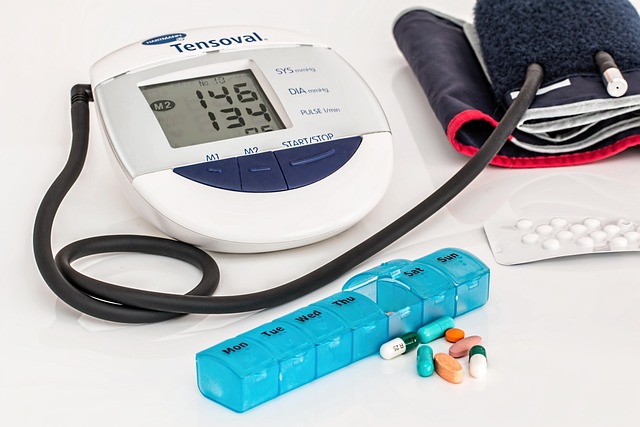Understanding Modern Approaches to Osteoporosis Treatment
Osteoporosis affects millions of people worldwide, weakening bones and increasing fracture risk. Recent advances in medical science have introduced new treatment options that go beyond traditional approaches, offering hope for better bone health management. From innovative medications to lifestyle interventions, understanding these developments can help patients and caregivers make informed decisions about bone health care.

Osteoporosis is a progressive condition characterized by reduced bone density and structural deterioration of bone tissue, leading to increased fragility and susceptibility to fractures. As populations age globally, the prevalence of osteoporosis continues to rise, making effective treatment strategies more important than ever. Modern medicine has responded with a range of therapeutic options that address both the prevention of bone loss and the promotion of bone formation.
Learn More About the New Osteoporosis Treatments
Recent years have seen significant progress in osteoporosis pharmacotherapy. Newer medications work through different mechanisms than older treatments, targeting specific pathways involved in bone remodeling. Anabolic agents, for instance, stimulate bone formation rather than simply slowing bone loss. Romosozumab represents one such advancement, acting as a monoclonal antibody that inhibits sclerostin, a protein that limits bone formation. This dual-action approach both increases bone building and decreases bone breakdown.
Another category gaining attention includes extended-interval dosing options that improve patient compliance. Some bisphosphonates now offer yearly infusions instead of daily pills, reducing the burden of treatment adherence. Denosumab, a biologic medication administered twice yearly via injection, provides an alternative mechanism by inhibiting RANKL, a protein essential for bone resorption. These options give patients and healthcare providers greater flexibility in designing treatment plans suited to individual needs and preferences.
What You Need to Know About the Latest Osteoporosis Treatments
Understanding how modern treatments differ from traditional approaches helps patients make informed choices. Traditional bisphosphonates like alendronate and risedronate remain foundational therapies, working by slowing the activity of osteoclasts, the cells responsible for breaking down bone. These medications have decades of safety data and proven efficacy in reducing fracture risk.
However, newer agents offer targeted benefits for specific patient populations. Abaloparatide and teriparatide are synthetic forms of parathyroid hormone that stimulate bone formation and are particularly useful for patients with severe osteoporosis or those who have failed other treatments. These anabolic therapies typically require daily injections for up to two years, after which patients transition to anti-resorptive medications to maintain gains.
Selective estrogen receptor modulators and hormone replacement therapy continue to play roles in certain cases, particularly for postmenopausal women. The choice of treatment depends on multiple factors including fracture history, bone density measurements, age, other medical conditions, and potential side effects. Personalized medicine approaches increasingly guide treatment selection, with genetic markers and biomarkers helping predict individual responses.
Everything You Need to Know About Advances in Osteoporosis Care
Beyond pharmaceutical interventions, comprehensive osteoporosis care encompasses nutritional support, exercise programs, and fall prevention strategies. Calcium and vitamin D supplementation remain cornerstones of bone health, with recommended daily intakes varying based on age and individual risk factors. Adequate protein intake also supports bone strength and muscle mass, which indirectly protects against fractures by improving balance and stability.
Exercise interventions have evolved with evidence supporting specific types of physical activity for bone health. Weight-bearing exercises, resistance training, and balance exercises all contribute to maintaining bone density and reducing fall risk. Emerging research explores the role of whole-body vibration therapy and other novel physical interventions, though more evidence is needed to establish their place in standard care.
Advances in diagnostic imaging allow earlier detection and better monitoring of treatment response. Dual-energy X-ray absorptiometry remains the gold standard for measuring bone mineral density, but newer technologies like trabecular bone score provide additional information about bone microarchitecture. These tools help clinicians assess fracture risk more accurately and adjust treatment strategies accordingly.
| Treatment Category | Examples | Typical Administration | Key Considerations |
|---|---|---|---|
| Bisphosphonates | Alendronate, Zoledronic acid | Daily oral or yearly infusion | Long safety record, gastrointestinal considerations |
| Anabolic Agents | Teriparatide, Romosozumab | Daily or monthly injection | Limited treatment duration, higher cost |
| Biologics | Denosumab | Twice-yearly injection | Requires continued treatment, rebound risk |
| Hormone-Based | Raloxifene, Estrogen | Daily oral | Specific patient populations, cardiovascular considerations |
The landscape of osteoporosis care continues to expand as research identifies new therapeutic targets and refines existing approaches. Combination therapies and sequential treatment strategies are being studied to maximize bone density gains and minimize fracture risk over the long term. Patient education and shared decision-making have become central to treatment success, ensuring that individuals understand their options and actively participate in their care plans.
Emerging areas of investigation include the gut microbiome’s influence on bone health, the role of inflammation in bone loss, and potential regenerative medicine approaches. While these remain largely experimental, they represent the future direction of osteoporosis research and may eventually translate into clinical applications.
Managing osteoporosis effectively requires a multifaceted approach that combines appropriate medication selection with lifestyle modifications and regular monitoring. Healthcare providers work with patients to balance treatment benefits against potential risks, adjusting strategies as new evidence emerges and individual circumstances change. With the array of options now available, most patients can find an effective treatment regimen that fits their specific situation and improves their long-term bone health outcomes.
This article is for informational purposes only and should not be considered medical advice. Please consult a qualified healthcare professional for personalized guidance and treatment.




